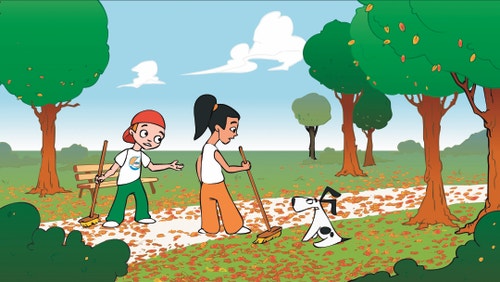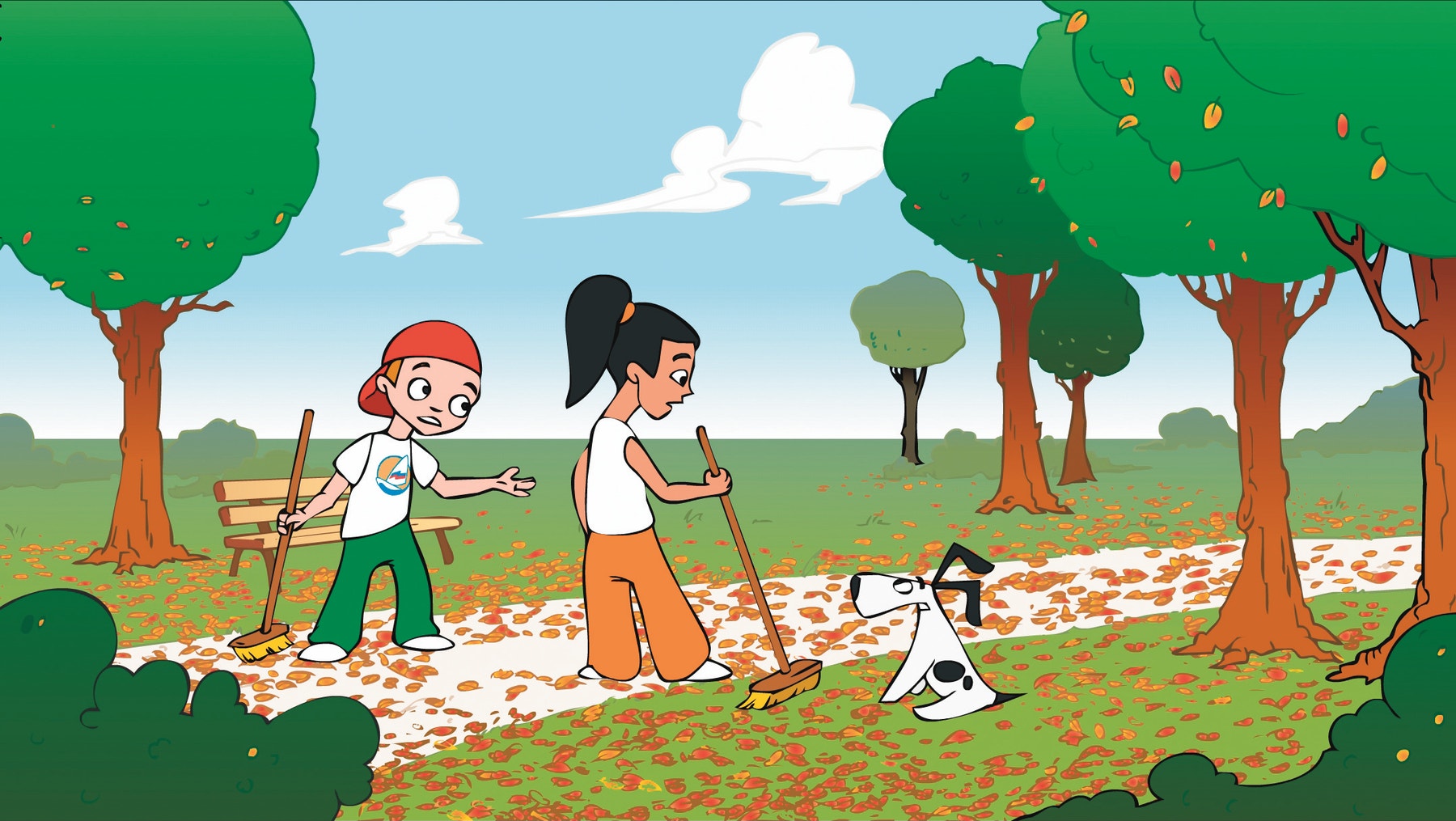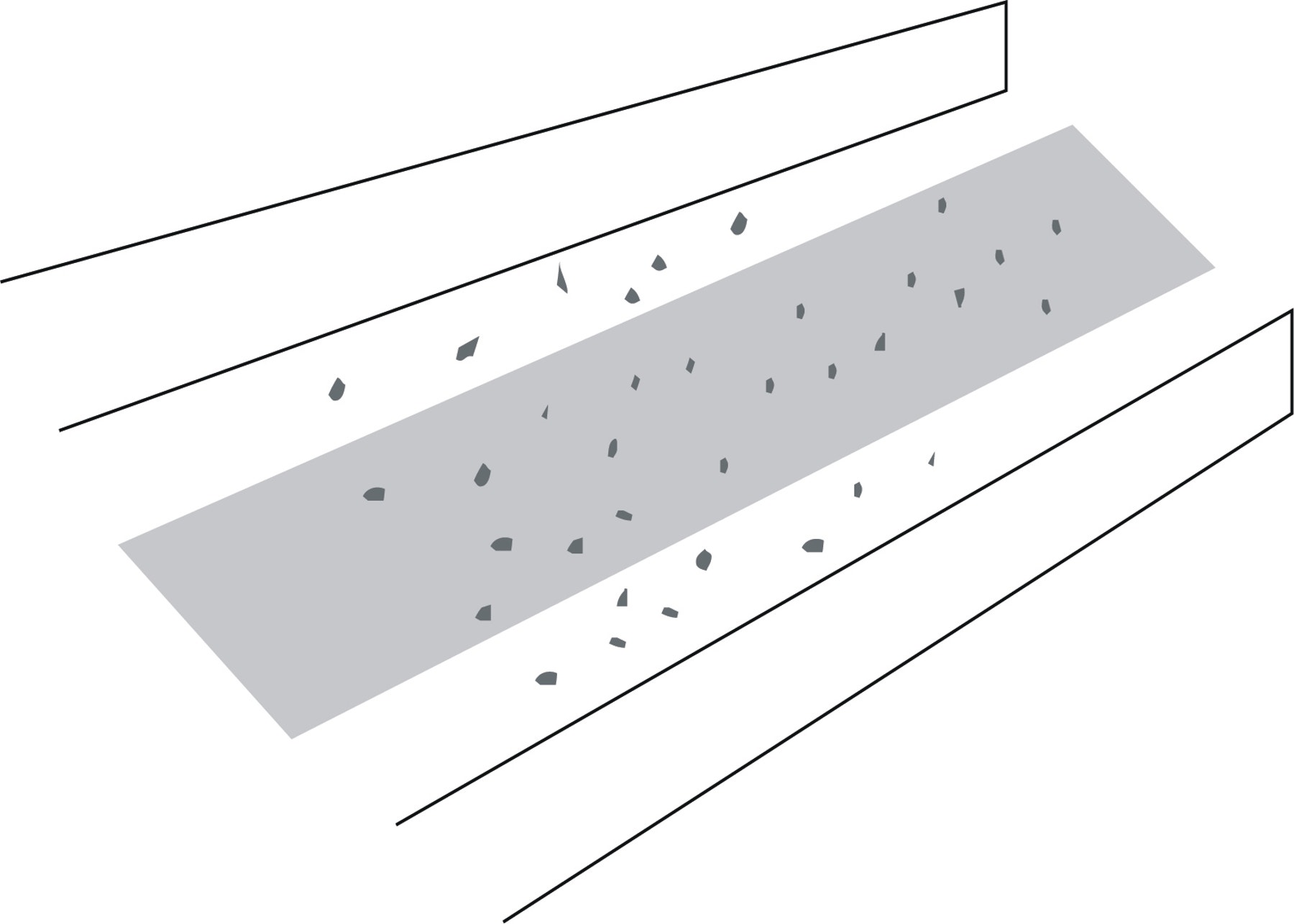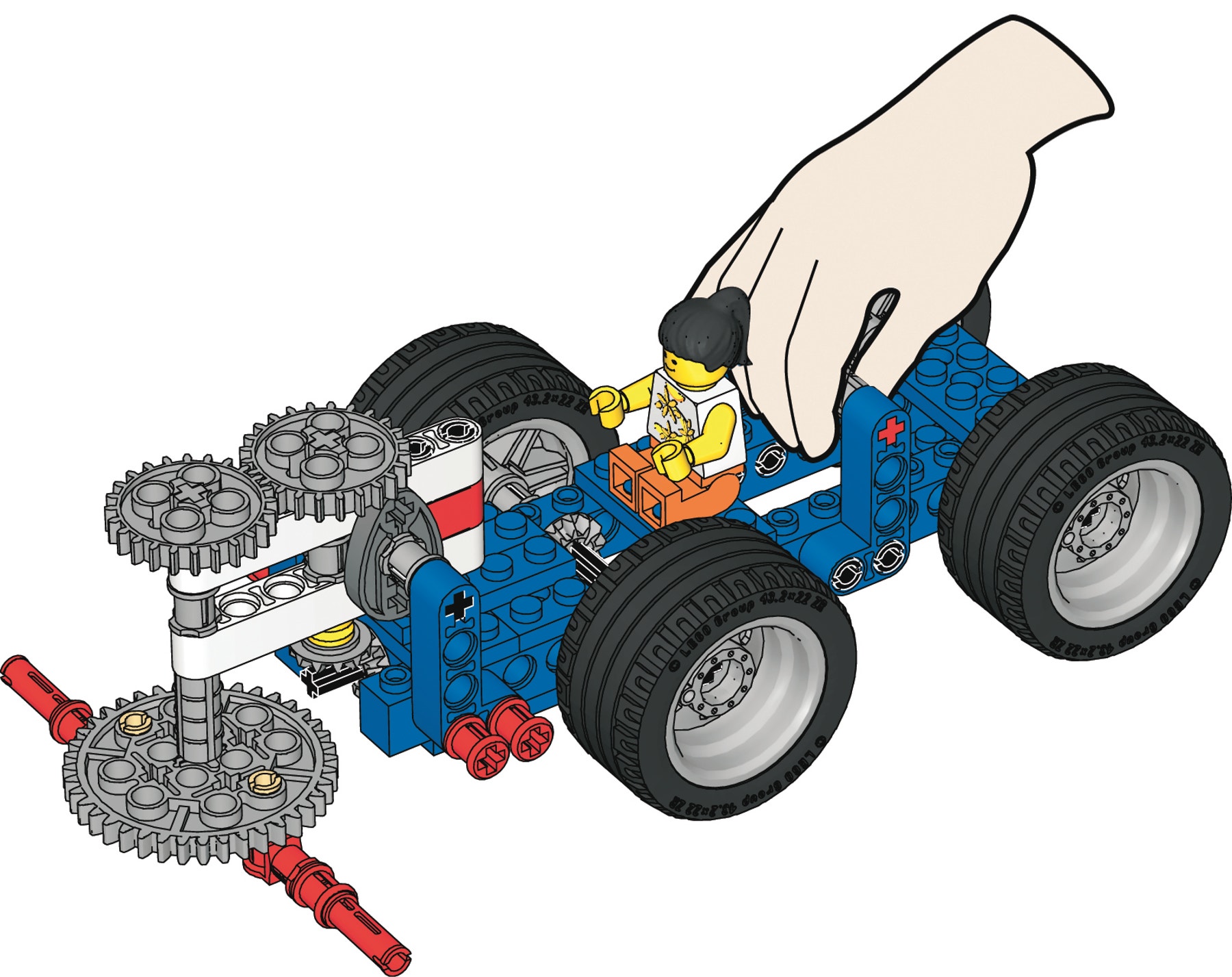Sweeper
Explore the scientific concepts of bevel gears, gearing up, pulleys, safety systems, distance and friction.

Connect
(5-10 Minutes)
The path is covered in trash and leaves. It looks terrible and could be dangerous if someone slips on it! Now Jack and Jill have the job of cleaning it up, but they are not keen on their brooms and would much rather play on their cart.
Zog the Dog tries to help out but he’s not very good at it.
Suddenly they get an idea about combining the broom with the cart, but they are not sure exactly how to make it work.
How can you combine pushing a cart with cleaning a path?
Let’s find out!

Construct
(20-25 Minutes)
Make the Test Park
Use a smooth tabletop or floor, and place your crumb-proof wall or box on it.
Evenly spread out strips of crumpled paper scraps across a 10 cm (≈ 4 in) wide and 60 cm (≈ 24 in) long section of your park. This is the path covered in litter.
Leave plenty of room on either side of the path for the scraps to fly!

Build the Sweeper
(all of book 1A and book 1B to page 8, step 11)

Test That It Runs Smoothly
Push it gently across the table. The spinner should spin freely without hitting the frame of the cart and the sweeper ‘blades’ should open out and spin without touching the table.

Contemplate
(20-25 minutes)
How well does it sweep?
Push it along the dirty path. How much of the scraps did you sweep aside? A quarter? Half?
What problems are there with this design? Estimate the amount swept aside compared to what is left on the strip.
It is not a fast sweeper and it doesn’t actually pick up the scraps!
Did you know?
All the gears with regular teeth, like the big gear, are called spur gears.

What is the gearing of the sweeper?
Push the sweeper along so the cart’s wheels turn once. How many times does the sweeper head turn? Can you explain?
The sweeper head turns once. The gearing is 1:1. All the bevel and spur gears that mesh with each other are the same size. So there is no change in speed.
Tip:
What do the bevel gears do? They turn the direction of movement through 90°. They send moving energy around corners!

How can we make it sweep faster?
Try different combinations of drive gears (step 12, step 13).
Step 12 makes the sweeper head far too slow, step 13 makes it 5 times as fast.
Note the 40-tooth gear driving the 8-tooth gear!

Jack and Jill would like to finish the job as quickly as possible so no one will fall over in the leaves and hurt themselves. To help them, try adding more blades to the sweeper head (step 14).
Three blades make it unbalanced and even worse than 2 blades. Four blades is better, and in balance.

Danger!
Push the sweeper and hold the sweeper head. What happens and what problems could this lead to?
The wheels may lock and the gears jump. Any items getting stuck in the sweeper may overload the machine or break the gears.
Continue
(25-30 Minutes)
A Safer Sweeper
Rebuild the model to be driven by pulley belts. Try out different pulley systems. Predict and test how fast they will spin and how well they sweep.
The sweeper head usually rotates more quickly. The bigger the driver pulley, the faster the rotation. It is harder to push though as there is more friction on the axles.
Push the sweeper and hold the sweeper head again. What happens? What are the pros and cons?
The driving band slips.
Good Points:
The sweeper will stop if something jams in it. It could be safer for the operator too.
Bad Points:
It takes more energy to push.

A Dirt-Collector
Can you work out a way to not only remove the trash from the path, but also collect it?
Teacher Support
Students will explore the concepts of:
Using mechanisms – bevel gears, gearing up, pulleys
Testing before making improvements
Safety systems
Measuring distance
Friction
Scientific investigation
9686 Simple & Powered Machines Set (two students per set recommended)
A large cardboard box or low card wall to stop flying trash, approx. 60 x 40
(≈ 24 x 16 in) is ideal
For trash: use crumpled scraps of paper, LEGO® connector pegs, bushings, crushed real leaves, or the like
NGSS
Crosscutting Concepts
Structure and Function
Science and Engineering Practices
Developing and using models
Planning and carrying out investigations
Constructing explanations and designing solutions
Common Core Mathematics Standards
7.RP.A / 6.NS.B / 6.EE.C / 7.EE.B / 8.EE.B / 8.F.B / 6.SP.A
Common Core English Language Arts
SL 6.1 / 6.2 / 7.1 / 7.4 / 8.1
RST 6-8.3 / 6-8.4 / 6-8.7
WHST 6-8.1 / 6-8.7 / 6-8.8 / 6-8.9
Student Material
Share with:
 Google Classroom
Google Classroom